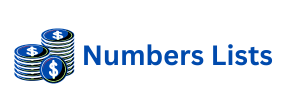Boosting Content Authority with Strategic Backlinks
Content writing is much more than just putting words on a page. It involves intricate strategies to ensure visibility. One core pillar of search engine optimization (SEO) is backlinking. Backlinks are essential for driving organic traffic. They signal trustworthiness to search engines. Both external and internal links play vital roles. Understanding their functions is key for any writer. This guide explores their impact. We will cover how each link type enhances content. Ultimately, strategic backlinking elevates your content. It helps it rank higher in search results. This process creates a stronger online presence.
Effective backlinking builds a robust web presence. It connects your content within the internet ecosystem. Content writers must integrate these links thoughtfully. This ensures maximum SEO benefit. High-quality backlinks improve your domain authority. They also enhance user experience on your site. Mastering both external and internal linking is crucial. It supports your overall content strategy. Each link type offers unique advantages. Combining them creates a powerful SEO synergy.
The Power of External Backlinks in Content Strategy
External backlinks are links from other websites to yours. They act as “votes of confidence.” Search engines see these as endorsements. High-quality external links are invaluable. They significantly boost your site’s authority. Earning them requires exceptional content. Other sites link to content they find valuable. This can be original research or insightful guides. More external links often mean higher rankings. They also drive referral traffic to your pages. This traffic is highly engaged. It arrives directly from a relevant source.
Understanding what defines a high-quality External Backlink is crucial for any content writer. Not all backlinks are created equal. Links from authoritative, relevant sites hold more weight. Spammy or low-quality links can harm your SEO. Focus on creating content that naturally attracts these links. Think about what other websites would want to reference. This includes unique data, expert opinions, or comprehensive resources. Your content becomes a valuable asset. It earns credibility from diverse sources.
Crafting Content to Attract Quality External Links
Earning external backlinks is a strategic process. It starts with creating exceptional content. Produce pieces that offer unique value. This could be in-depth research or novel perspectives. Evergreen content also attracts consistent links over time. These are topics that remain relevant. Comprehensive guides are highly shareable. They become go-to resources for an industry. Think about creating content that solves problems. Provide answers to common questions. This approach makes your content indispensable.
Promoting your high-quality content is also essential. Share it across relevant platforms. Engage with industry influencers. They might discover your content organically. Guest posting on other reputable sites helps. You can then link back to your own relevant articles. This builds relationships within your niche. It also signals your authority. Develop a content strategy focused on link building. Aim to create assets that others genuinely want to cite. This proactive approach yields the best results.
Enhancing Site Structure with Internal Backlinks
Internal backlinks connect different pages within your own website. They are critical for website navigation. These links guide users through your content. They also help search engine crawlers. Internal links improve site structure. They establish a hierarchy of information. This distributes “link equity” or “link juice.” It means authority flows between your pages. Strong internal linking boosts individual page authority. It enhances the overall user experience. Users can easily find related content.
Strategic internal linking is a core SEO practice. It helps search engines understand your site. They can crawl and index pages more effectively. This ensures all your valuable content is discovered. Internal links also reinforce topical relevance. They show the relationship between different articles. For example, a blog post about dog training could link to one about dog food. This creates a logical user journey. It keeps visitors on your site longer. This engagement signals quality to search engines.
Strategic Internal Linking for Improved Content Flow
Implementing effective internal links requires careful thought. Choose anchor text wisely. It should be descriptive and relevant. Avoid generic phrases like “click here.” Instead, use phrases reflecting the linked page’s content. This tells users and search engines what to expect. Ensure links flow naturally within the text. They should add value to the reader’s experience. Don’t force internal links where they don’t fit. Relevance is paramount for all links.
Regularly audit your internal link structure. Check for broken links or redirects. Ensure your most important content receives ample internal links. This strengthens its authority within your site. Choosing the right anchor text for your internal links, often utilizing a relevant Keyword, strengthens contextual relevance. A well-planned internal linking strategy enhances SEO. It provides a superior experience for your audience. Both external and internal links are powerful tools for content writers.
